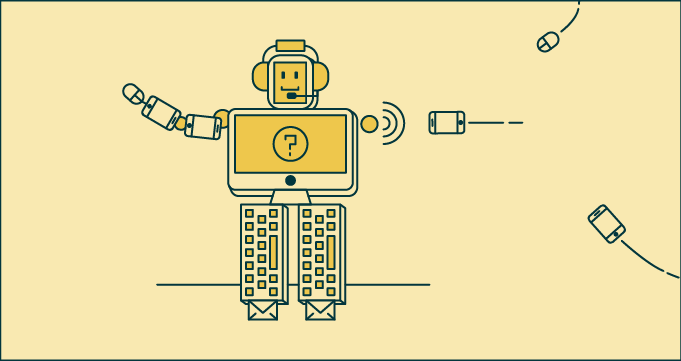Article • 4 min read
Agents need cross-channel communication
Vasu Prathipati
CEO of MaestroQA
Última actualización en March 25, 2024
I recently had a rough customer service interaction. There was an issue in compensation on a returned order, and when I interacted with the support team across email and live chat (a few back-and-forths) it was clear that they were missing information from prior interactions. I ended up having exchanges with multiple agents, and it seemed like a new ticket was being opened each time we talked—could it be? As a consumer, it was incredibly frustrating.
I felt like I shouldn’t have to suffer from back-end issues that the agents were experiencing. On the flip side, agents shouldn’t have to deal with a support platform that doesn’t enable them to do their jobs well.
If they’d had the right platform, the agents would have been able to more effectively help me. I would have been happier with them and, frankly, I would have been happier with the company and my experience as a whole.
Omnichannel support is better for the agent, for the customer, and ultimately for the company’s bottom line. Here’s why:
Better for agent: holistic customer data
Adopting solutions built for omnichannel support (each channel feeds into one dashboard on the agent side) makes it so that support teams don’t have to bounce between multiple solutions, or get their developers to integrate disparate products—this takes time and resources obviously, but the worst part is that it often doesn’t work as well as a product built specifically for omnichannel.
When agents have access to this type of platform, they have access to holistic customer data that tells the entire story of the brand-customer experience.
When platforms offer everything in one place, each product (agent side) and channel (customer side) works well together, and has complete data on customers’ support histories.
This would fix the pain that I was feeling in my recent support interaction. If an agent can see my history with the brand, across all platforms, they’d know how to help me with my current issue, and they’d have the context of my entire relationship with the support team. Context can make a huge difference.
Better for agent: fluctuating channel volume
When each agent has access to a dashboard with all incoming customer requests, and is enabled to support customers on every channel, the support team is more adaptable, and better able to help customers in variable conditions. If you have an influx of customer requests on one channel one day, and a different channel the next day, the quality and efficiency of customer support should not be affected.
The customer won’t know (or care) if your email people are at capacity because of an unusually high volume on that channel—and omnichannel customer service software enables agents to meet customers on the platform of their choosing, whenever they choose.
Retail customer support in 2018
Better for customer: platform of choice
If you’re a company that believes customer support is a relationship building opportunity, you’ll want it to be as easy as possible for customers to contact you. One way to do this is through offering equal quality support on many channels, and making sure that when they reach out—no matter the channel—, their issue can be solved on the channel of their choosing.
If possible, the same agent should be able to help them the entire time, and if they do have to switch platforms to resolve an issue—moving from email to phone, for instance—the customer shouldn’t have to re-explain the issue to the agent.
Learn out how omnichannel support changed Fullscript’s support team.
Support team challenge: ensure high quality customer engagement across platforms
You can imagine that it would be difficult to ensure high quality support interactions when agents are staffed across every channel. After all, every channel is different and you might not have channel specialists.
Some teams try to manage this by grading interactions on each channel and keeping notes in spreadsheets. This is okay for giving one-on-one agent feedback, but severely limits actionability if you’re curious about trends across the support org.
Just like disjointed channel experiences, this is another platform problem that customers can feel. And as with support software—you want QA software to be fully integrated and seamless in terms of data and agent experience.
When you understand the quality of agent support on each channel, you can better train agents, improve support overall, and leave your customers with positive experiences that they’ll remember.
Learn about how the integration of Zendesk and MaestroQA helped Harry’s provide exceptional customer experiences.
Better for the bottom line
When companies move off a combination of siloed support tools and adopt an omnichannel solution with an emphasis on quality, their customers will feel the difference.
Keeping customers happy is better for business. Happier customers are more likely to shop with you again. They’re more likely to recommend your company to friends, and that’s what it’s all about.
